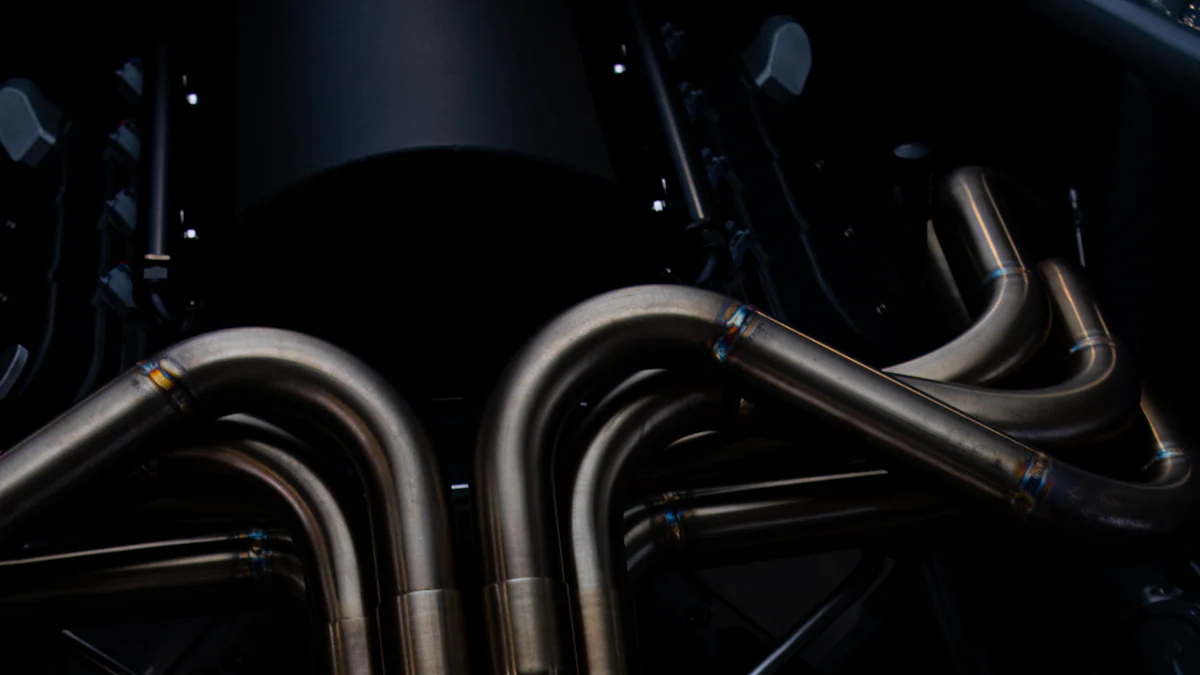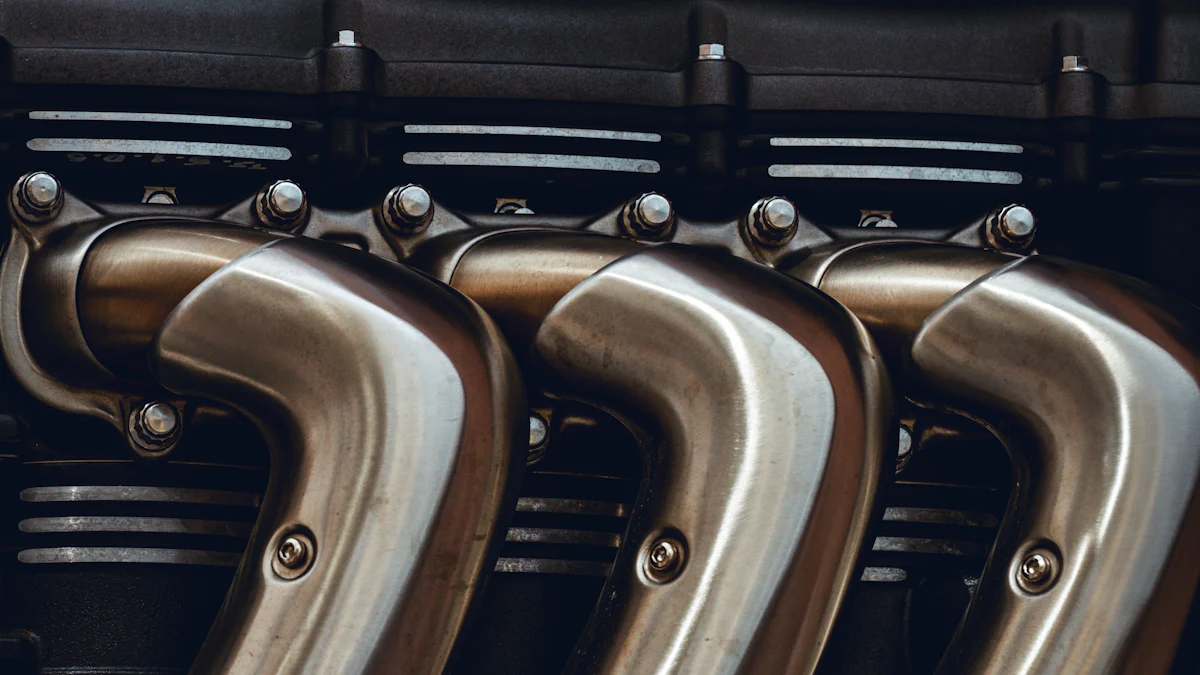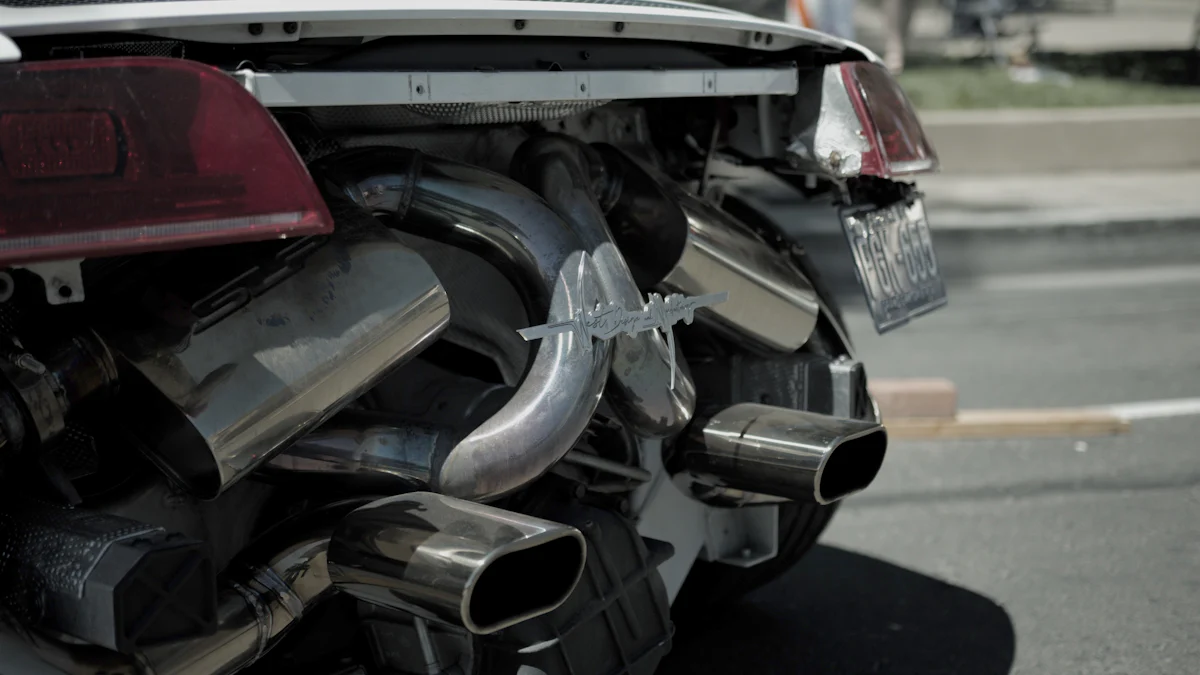
The exhaust manifold serves as a crucial component in a vehicle’s exhaust system. It gathers exhaust gases from individual cylinders and directs them into a single pipe connected to the rest of the exhaust system. Understanding the exhaust manifold’s role helps in maintaining engine performance and reducing emissions. Locating the exhaust manifold becomes essential for diagnosing issues and performing maintenance tasks effectively.
Understanding the Vehicle Exhaust Manifold

What is an Exhaust Manifold?
Definition and Function
An exhaust manifold serves as a critical component in a vehicle’s exhaust system. This part collects exhaust gases from multiple engine cylinders and directs them into a single pipe. The exhaust manifold ensures that gases flow smoothly from the engine to the exhaust system, reducing back pressure and improving engine efficiency.
Types of Exhaust Manifolds
Different types of exhaust manifolds exist to meet various performance and design needs. Common materials include cast iron and stainless steel. Cast iron manifolds offer durability and cost-effectiveness. Stainless steel manifolds provide better heat resistance and reduced weight. Aftermarket options, known as headers, enhance performance by improving exhaust gas flow and reducing back pressure.
Importance of the Exhaust Manifold
Role in Engine Performance
The exhaust manifold plays a significant role in engine performance. By efficiently collecting and directing exhaust gases, the manifold reduces back pressure. This reduction enhances engine power and fuel efficiency. Custom manifolds can further optimize performance by improving heat dissipation and reducing emissions.
Impact on Emissions
The exhaust manifold also impacts vehicle emissions. Properly functioning manifolds ensure that exhaust gases flow smoothly to the catalytic converter. This process helps reduce harmful pollutants released into the atmosphere. Advanced designs and materials in modern manifolds aim to meet stricter emission standards, contributing to environmental protection.
Locating the Exhaust Manifold

Identifying the Exhaust Manifold
Visual Characteristics
The exhaust manifold often appears as a robust, metallic component. The manifold typically has multiple tubular branches converging into a single outlet. Cast iron manifolds usually have a rough, dark surface. Stainless steel manifolds exhibit a smoother, shinier appearance. The manifold connects directly to the engine block, making it easily identifiable.
Common Locations in Different Vehicle Types
In most vehicles, the exhaust manifold sits between the cylinder head and the catalytic converter. Inline engines feature a single manifold on one side of the engine. V-type engines have two separate manifolds, each attached to a cylinder head. Front-wheel-drive vehicles often place the manifold closer to the front of the engine bay. Rear-wheel-drive vehicles may position the manifold nearer to the firewall.
Tools and Techniques for Locating
Basic Tools Needed
To locate the exhaust manifold, gather the following tools:
- Flashlight
- Socket wrench set
- Screwdriver
- Safety gloves
These tools help in identifying and accessing the manifold without causing damage.
Step-by-Step Guide to Locating
- Open the Hood: Release the hood latch and prop the hood open securely.
- Locate the Engine Block: Identify the engine block, which serves as the central component of the engine.
- Find the Cylinder Head: Look for the cylinder head, positioned at the top of the engine block.
- Identify the Manifold: Spot the exhaust manifold bolted to the cylinder head. Notice the tubular branches leading to a single outlet.
- Use a Flashlight: Illuminate the area with a flashlight to get a clear view of the manifold.
- Check Both Sides: For V-type engines, inspect both sides of the engine for separate manifolds.
Following these steps ensures accurate identification and location of the exhaust manifold.
Common Issues with Exhaust Manifolds
Signs of a Faulty Exhaust Manifold
Common Symptoms
A faulty exhaust manifold often presents several noticeable symptoms. One common sign includes a loud ticking or tapping noise from the engine area, especially during startup or acceleration. This noise usually indicates an exhaust leak caused by cracks or gaps in the manifold. Another symptom involves reduced engine performance, such as decreased power and acceleration. Exhaust leaks can disrupt the proper flow of exhaust gases, leading to increased back pressure and reduced efficiency.
Visible cracks or damage on the manifold surface also signal potential issues. In some cases, exhaust gases may escape through these cracks, causing a noticeable smell of exhaust fumes inside the vehicle. This situation poses a safety risk and requires immediate attention. Additionally, a faulty manifold can trigger the check engine light due to improper sensor readings caused by exhaust leaks.
Diagnostic Techniques
Diagnosing a faulty exhaust manifold involves several techniques. A visual inspection can reveal obvious cracks or damage. Use a flashlight to examine the manifold closely for any visible signs of wear. Pay particular attention to the areas where the manifold connects to the cylinder head.
Another diagnostic method involves using a smoke machine. Introduce smoke into the exhaust system and observe any leaks escaping from the manifold. This technique helps identify small cracks or gaps that may not be visible during a visual inspection.
A mechanic can also perform a pressure test to check for leaks. This test involves sealing the exhaust system and applying pressure to detect any escaping gases. A stethoscope can help pinpoint the exact location of the leak by amplifying the sound of escaping gases.
Preventive Maintenance Tips
Regular Inspections
Regular inspections play a crucial role in maintaining the health of the exhaust manifold. Inspect the manifold periodically for any signs of wear or damage. Pay attention to the condition of the connecting hardware, such as bolts and nuts. Ensure that these components remain secure and free from corrosion.
Include the exhaust manifold in the vehicle’s preventive maintenance checklist. Replace the manifold every 100,000 miles or sooner if any issues arise. Regular inspections help identify potential problems early, preventing more severe damage and costly repairs.
Cleaning and Care
Proper cleaning and care extend the lifespan of the exhaust manifold. Clean the manifold regularly to remove any dirt, debris, or carbon buildup. Use a wire brush and a suitable cleaning solution to scrub the surface gently. Avoid using harsh chemicals that may damage the manifold material.
Ensure that the manifold remains free from rust and corrosion. Apply a high-temperature anti-seize compound to the connecting hardware to prevent rust and facilitate easier removal during future maintenance. Regularly check the manifold for any signs of rust and address them promptly to prevent further deterioration.
By following these preventive maintenance tips, vehicle owners can ensure the longevity and optimal performance of the exhaust manifold. Regular inspections and proper care help prevent common issues and maintain the overall health of the vehicle’s exhaust system.
The exhaust manifold serves as a vital component in a vehicle’s exhaust system. Understanding its role and location helps maintain engine performance and reduce emissions. Regular inspections and proper care ensure the longevity of the manifold. A faulty manifold can lead to significant issues, such as exhaust leaks and reduced engine efficiency. Including the exhaust manifold in preventive maintenance routines prevents costly repairs. Vehicle owners should prioritize regular checks and maintenance to keep the exhaust system in optimal condition.
Post time: Jul-29-2024



